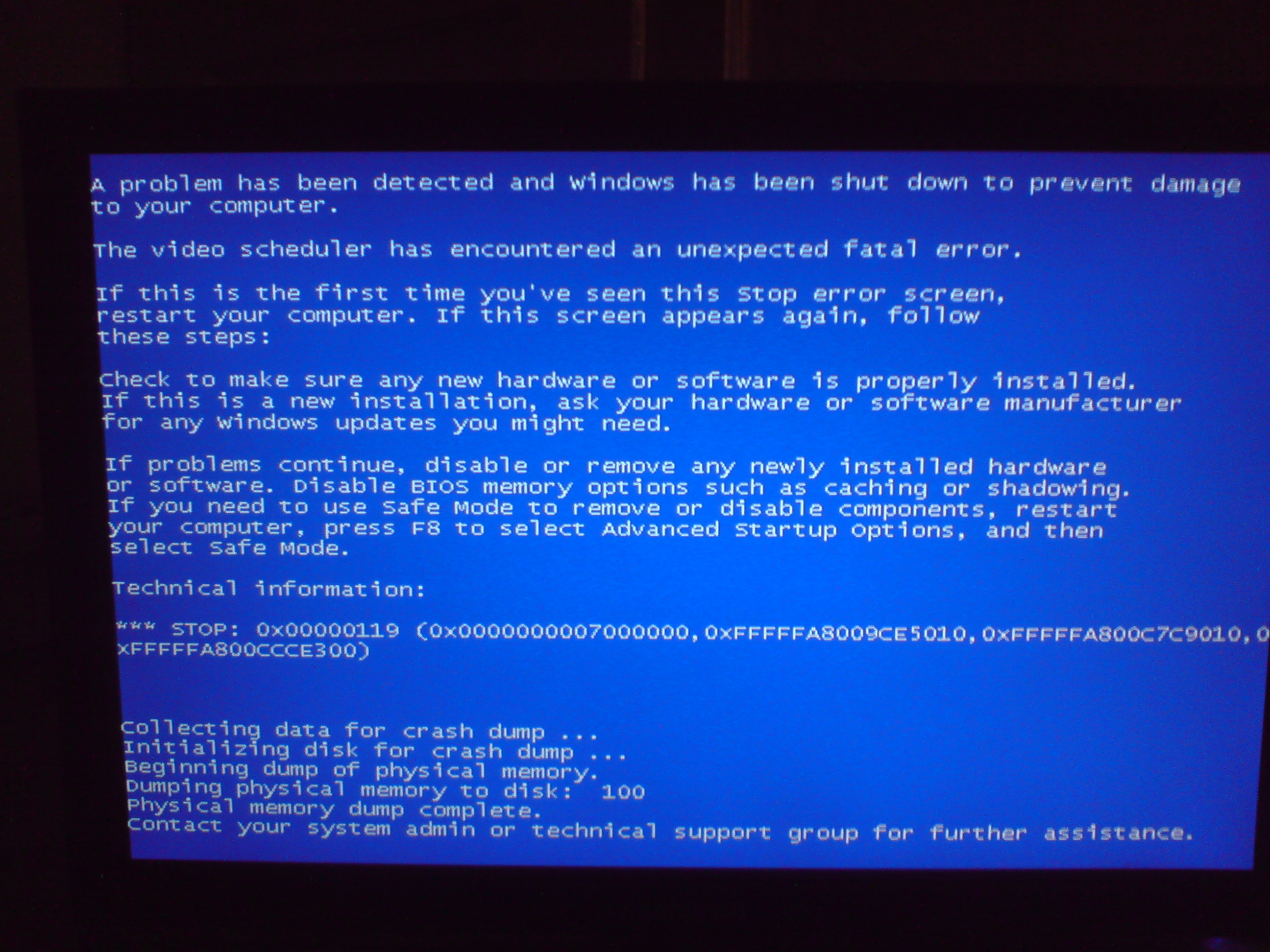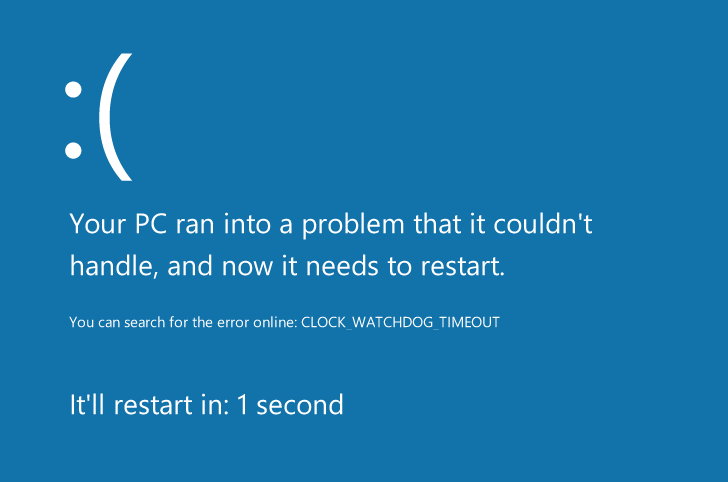| Snažíme se lokalizovat naše webové stránky v co největším počtu jazyků, jak je to možné, ale tato stránka je v současné době stroje přeloženy pomocí Google Translate. | zavřít |
-
-
produkty
-
prostředky
-
podpora
-
společnost
-
Průvodce “Video Plánovač Interní chyba” modrá obrazovka smrti chybA Guide to the “Video Scheduler Internal Error” Blue Screen of Death Error
Podle Steve Horton Únor 04, 2013Blue Screen of Death, bsod, video_scheduler_internal_error17 CommentsNázev chyby: VIDEO_SCHEDULER_INTERNAL_ERROR
Zdá se, že jste se setkal s modrou obrazovkou smrti. Naštěstí jste byli natolik chytří, abyste dokázali, jakou chybu jste získali, a prohledali informace online – a zde je vaše odměna odměněna. Pokud používáte starší verzi systému Windows, vaše BSOD vypadal takto:

Plánovač interní chyby videaAle pokud používáte Windows 8, vypadalo to takto:

Příklad systému Windows 8 BSoDNyní, když to máme mimo dosah, se dostaneme dolů k vašemu VIDEO_SCHEDULER_INTERNAL_ERROR. Modrá obrazovka smrti se stane, když se váš počítač setká s něčím, co neumí zpracovat – a tak se vypne a řekne vám, jaký je problém zachránit sám. Zatímco se říká “Modrá obrazovka smrti”, problém obvykle není tak závažný a po opětovném zapnutí počítače se neopakuje. Pokud jste zde, pravděpodobně to není pravda a chcete zjistit, co způsobuje tento problém, abyste jej mohli jednou provždy opravit.
Začněme tím, že se ujistíme, že je to “skutečný BSOD”. BSOD nemohou být předstírány, ale mohou být způsobeny jiným než tím, co se zdá být problém – často viry, malware nebo špatně nakonfigurované programy. Používáte-li aplikaci AVG, odstraňte ji nástrojem. Chcete-li zkontrolovat viry, použijte jiný Antivirus – osobně doporučuji Avast – a pomocí Malwarebytes prohledáváte malware. Na rozdíl od obecné víry, malware a viry jsou ve skutečnosti dvě různé věci. Pokud se tato konkrétní chyba začala po instalaci určitého programu, odstraňte ji také.
Jakmile to všechno uděláte, je čas se vypořádat s jádrem problému – grafickou kartou nebo, jak to říkáme, GPU. GPU zpracovává právě ty věci, které se na obrazovce zobrazují, a VIDEO_SCHEDULER_INTERNAL_ERROR je způsoben problémem v ovladačích GPU.
Ovladače jsou to, co umožňuje zařízení připojenému k počítači pracovat – ovladač vaší klávesnice určuje, jaké písmeno se na obrazovce zobrazí, když stisknete určitý klíč. Jsou to, co dělá vše fungovat, a pokud je problém s jejich konfigurací, budete mít problémy s vaším systémem.
První věc, kterou musíte udělat, je zjistit, jakou grafickou kartu máte – stisknutím tlačítka Start ( Windows Key + X v systému Windows 8) klepněte na tlačítko Hledat a zadejte ” Správce zařízení “. V nabídce ” Grafické adaptéry ” byste měli vidět název grafické karty. Pokuste se upgradovat ovladač ze systému Windows a pokud to nefunguje, přejděte na jeho webové stránky a ručně použijte ovladač sami. Je také dobré upgradovat všechny ostatní zastaralé ovladače ve vašem systému a používat službu Windows Update k inovacím operačního systému.
Pomocí ovladače Reviver můžete automaticky aktualizovat grafický ovladač.
Jakmile uděláte všechny tyto věci, neměli byste mít žádné další problémy. Pokud se však s nimi stále setkáváte, budete muset kontaktovat společnost Microsoft, výrobce grafické karty nebo registrovaného technika, abyste se ponořili do pokročilejších možností oprav.
Was this post helpful?YesNoVolný, uvolnit Aktualizace ovladačů
Aktualizujte své ovladače za méně než 2 minuty, abyste si mohli užívat lépe výkon PC - Volný, uvolnit.
Volný, uvolnit Aktualizace ovladačů
Aktualizujte své ovladače za méně než 2 minuty, abyste si mohli užívat lépe
výkon PC - Volný, uvolnit.
Nenašli jste odpověď?Zeptejte se na naší komunity odborníků z celého světa a obdržet odpověď v žádném okamžiku vůbec.most relevant poslední články Připněte si to na Pinterest